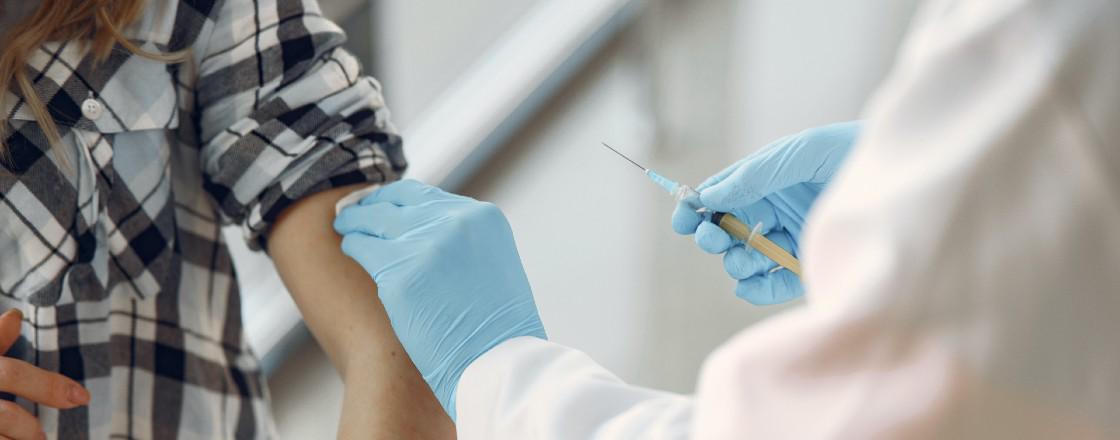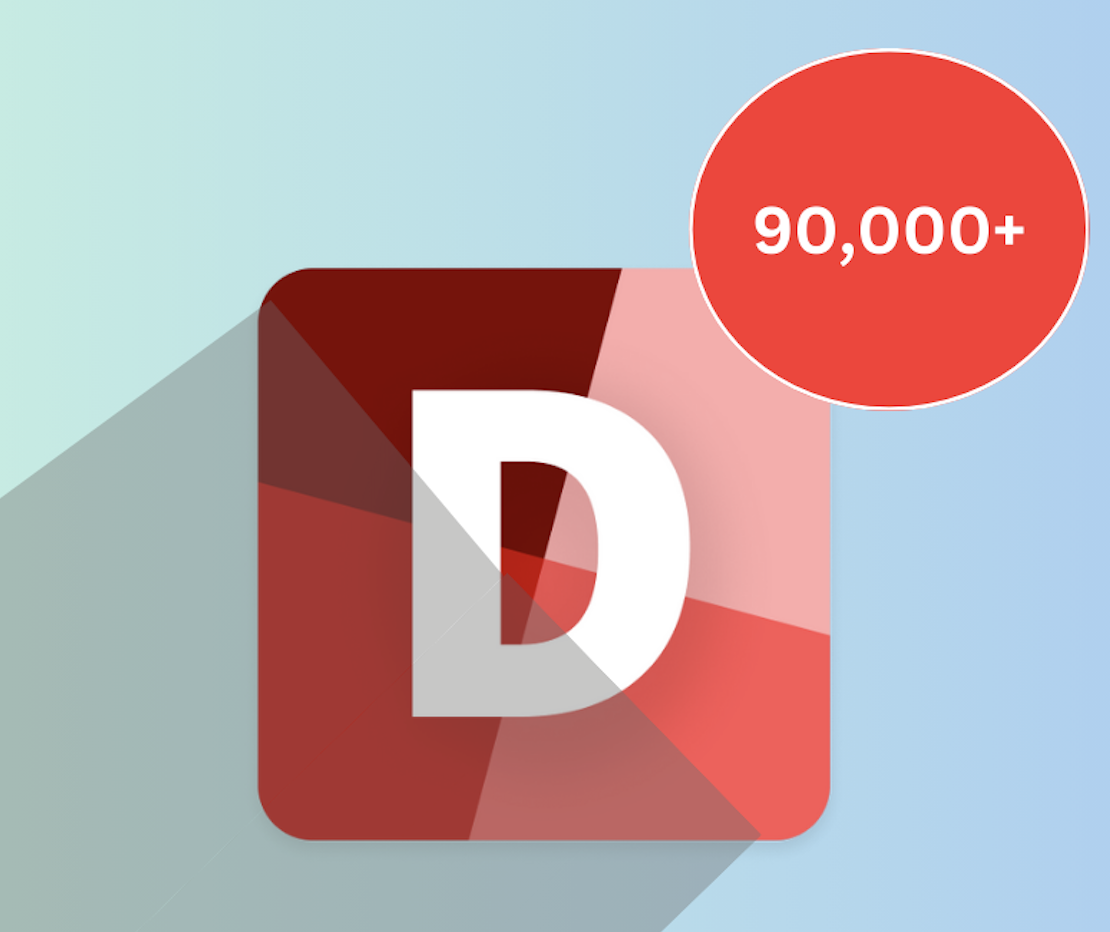Vaccine Hesitancy and the J&J Vaccine Suspension

As the United States races to vaccinate its residents, allowing COVID restrictions to loosen and much of normal life to resume, it’s crucial that everyone is confident in the COVID vaccines and willing to receive them. That’s why it was concerning when, on April 13th, the Centers for Disease Control and Prevention (CDC) and the Food and Drug Administration announced their recommendation to pause use of the Johnson & Johnson vaccine until they can investigate severe blood clots developed by several women after they received the vaccine. This followed news reports of adverse effects reported several days earlier. Though all signs suggest the Pfizer and Moderna vaccines – which make up the bulk of the US’s doses – are safe, and the blood clots are being carefully investigated, it would be unfortunate if this incident lowers public confidence in vaccine.
Some polls already suggest the public is now less confident in the Johnson & Johnson vaccine, but it’s difficult to track changes over time with most polls, and to put the changes into context. That’s why the Delphi Group has been tracking COVID vaccination using its COVID Symptom Survey, a massive survey distributed daily across the United States through our partnership with Facebook. We’ve successfully used this survey to track social distancing and mask use, and it’s part of Delphi’s COVID forecasting system.
Since the beginning of January 2021, we have asked all respondents about whether they have been vaccinated, whether they’d be willing to be vaccinated, and any reasons they may choose not to be vaccinated – and because the survey is taken by nearly 40,000 respondents per day, we can detect sudden changes and make geographic comparisons across the United States.
The good news is that, while there may be a temporary setback, we don’t see major changes in vaccine hesitancy yet. But our data also suggests this is the time for action – that public health officials must work to earn public trust and boost confidence in COVID vaccines, and must do so quickly.
National changes in vaccine acceptance
Let’s start with vaccine acceptance. We ask respondents whether they are already vaccinated; if not, we ask whether they would accept a vaccine if one was offered to them today. If we count everyone who either is already vaccinated or is willing to be, then among 1,545,599 survey responses, we see a consistent increasing trend that stops as the news broke, followed by a delay of a few days and a recovery:
The red lines mark April 9th, when some of the first reports of adverse effects made it onto the news, and April 13th, when the CDC and FDA issued their recommendation to suspend the vaccine. The resulting dip in acceptance lasted a few days before rates returned to their previous levels. But note the Y axis scale: we’re looking at a change of around 1 percentage point, which is only noticeable because of the size of our survey. While it is not yet clear if acceptance will resume its upward trend or if we’ve reached a ceiling, it is reassuring that it has not dramatically fallen.
But these numbers don’t tell the whole story. It’s more useful to look at the reasons for hesitancy. When respondents say they probably or definitely would not choose to get vaccinated, we also ask them to select from a list of possible reasons. We might expect an increase in the number of respondents indicating concern about side effects as a reason, and we might also expect a larger increase among women – since the early blood clots all affected women. But among all respondents (counting those already vaccinated as not having side effect-related hesitancy), the percentage who are unwilling to get vaccinated and indicate side effects as a cause shows only a small bump:
The bump is larger among men than women, although the difference is quite small (around half a percentage point) and could easily reflect measurement error rather than a true difference.
Now let’s look just at unvaccinated respondents. Concerns about side effects have consistently been one of the most common reasons unvaccinated respondents give for hesitancy, even before the announcement:
| Frequency of hesitancy reasons among unvaccinated respondents | ||
|---|---|---|
| Before and after J&J vaccine pause, nationally | ||
| Reason | Before1 | After2 |
| Concerned about side effects | 22% | 29% |
| Don't trust COVID-19 vaccines | 21% | 28% |
| Don't trust the government | 18% | 23% |
| Plan to wait and see if it's safe | 17% | 22% |
| Don't need a COVID vaccine | 16% | 20% |
| Concerned about allergic reaction | 11% | 15% |
1
April 2 – April 8, n = 77,314, margin ±0.3 points 2
April 13 – April 21, n = 74,901, margin ±0.3 points | ||
As you can see, each reason has been increasing over time. (Respondents can select multiple reasons from a list of about 15, so the numbers do not add to 100%.) But that is what we would expect to happen in normal circumstances: As more people get vaccinated, the people who remain unvaccinated are those who either don’t want to be vaccinated or haven’t yet been able to.
Given the other reasons commonly selected – a lack of trust in the vaccines and the government, a preference to wait and see if the vaccines are safe – the concerns about side effects are likely part of the common concern that the COVID vaccines are unsafe because they were developed very quickly. Those concerns predate the Johnson & Johnson vaccine announcement. The largest increases are among choices about side effects and trust in the vaccines, suggesting the announcement may have exacerbated existing concerns among people skeptical of the vaccines.
Hesitancy and concerns about side effects are also not distributed evenly across the United States, instead being concentrated in southern and southwestern states like Louisiana, South Carolina, and New Mexico, as well as north-central states like Wyoming, North Dakota, and Montana:
This disparity across the country suggests that concerns about side effects are not just driven by the news. They’re partly driven by longstanding demographic and historical differences, and as other researchers have noted, “no group is monolithic in their vaccine attitudes, and in every demographic segment there are large shares of people who are ready to get the vaccine, others who are in “wait and see” mode, and some who are more resistant." There is hence no magic solution, only thoughtful and considerate approaches that work to earn the trust of each potential vaccine recipient.
Who would respondents trust?
This, of course, raises a question: What would convince hesitant people to get vaccinated? What messages work best, delivered by whom? But while our survey helps us understand their reasoning, it doesn’t say how best to convince them – after all, it’s hard to ask a survey respondent “Tell us the best way to change your mind.” There are some steps that are clearly necessary, such as a thorough and public investigation of any adverse effects so they can be understood and prevented. But our survey doesn’t directly say what information should be provided to the public.
Other researchers have been studying the reasons people are hesitant in more depth, to better understand the messaging that would convince them. For example, Surgo Ventures has developed a grouping of hesitancy reasons, so messaging can be targeted separately to “the watchful” – those who want to wait and see if the vaccines are safe – and to other groups like those anxious about medical costs or those who distrust the system. We’re currently working to expand our survey to facilitate this analysis at a national scale.
We also ask who respondents would trust to recommend COVID vaccines to them. We ask all unvaccinated respondents “Would you be more or less likely to get a COVID-19 vaccination if it were recommended to you by each of the following?” Looking just at respondents who are concerned about side effects, here’s what we see:
| How recommedations by different sources would change vaccine intent | |||
|---|---|---|---|
| Among respondents hesitant because of concerns about side effects | |||
| Source | More likely | About the same | Less likely |
| Doctors and other health professionals you go to for medical care | 16% | 51% | 33% |
| Friends and family | 10% | 54% | 36% |
| World Health Organization | 4% | 34% | 62% |
| Government health officials | 2% | 28% | 70% |
| Politicians | 1% | 16% | 83% |
It seems most respondents don’t anticipate anyone changing their minds – but if anyone did, it would be the healthcare providers they already trust, or their own friends and family members. This suggests strategies that involve enlisting the support of primary care doctors, nurses, and other healthcare providers across the country who see patients regularly, know their histories, and understand their concerns about vaccines. And these results certainly suggest that announcements by politicians would achieve little among people already skeptical of vaccines and the government.
Limitations
As with any scientific study, there are limitations to the results seen above. Here are a few important things to keep in mind:
- We’re surveying Facebook users. While we weight survey responses to ensure their age and gender distribution matches the United States population, our respondents do tend to be more educated than the national average, which the weights do not correct for.
- The survey is voluntary. Facebook draws a random sample of active users every day and invites them to take the survey via a promotion in their News Feed. Many people don’t respond to the invitation, and while the Facebook-provided survey weights attempt to account for this by using models to predict the probability each user will respond, there may still be unobserved biases remaining.
- Survey responses are simplifications. Our respondents can select reasons for hesitancy from a list, but ticking boxes can’t fully represent the complexity of their beliefs and the reasons for their lack of trust in COVID vaccines. Also, their responses may not always match their behavior: a respondent who says they “probably wouldn’t” get vaccinated may decide to get vaccinated when a dose is offered to them, and a respondent who “definitely would” get vaccinated might change their mind.
One result of these biases is that our estimate of the percent of Americans who have already received a COVID vaccine is too high when compared against official CDC data. So while our survey can detect changes over time, it’s possible there’s a consistent upwards bias to some of our vaccine uptake and acceptance estimates. Fortunately our results, and particularly the prominent role of concerns about side effects from vaccines, match well with results from other surveys conducted with nationally representative samples.
Conclusions
Based on survey responses from hundreds of thousands of Facebook users, we do not see evidence that the Johnson & Johnson vaccine pause has caused major changes in public willingness to get vaccinated. While there have been some shifts, they’re relatively small and connect to existing skepticism about the safety of the COVID vaccines. To expand acceptance of COVID vaccines, public health officials will need a combination of approaches and a good understanding of the reasons people are hesitant. Surveys like ours can help target this work and track progress, but it will take much more than just surveys to reach out to all Americans and ensure they both have access to vaccines and the willingness to receive them.
Nonetheless, this demonstrates the value of Delphi’s COVID Symptom Surveys for studying public attitudes and behavior during the pandemic. In partnership with Facebook, who help us distribute the surveys, and the University of Maryland, who run an international version in 56 languages worldwide, we have been able to track the pandemic and its effects on society for over a year now. And much of our data is easily accessible to researchers, through aggregates in the Delphi COVIDcast Epidata API and tables available for download, and as de-identified individual responses for researchers who sign Data Use Agreements. With so many responses daily, we can react quickly and spot local changes. If you’re conducting COVID-related research, we encourage you to explore the data and see how it can help you.
Acknowledgements: Esther Kim, Curtiss Cobb, Sarah LaRocca, and Katherine Morris at Facebook contributed ideas for the analysis in this post. At Delphi, Wichada La Motte-Kerr implemented many of the survey questions used in this analysis, while Nat DeFries maintained the data processing systems needed to make the data available.
Related Posts:

